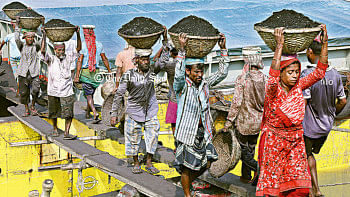The multifaceted realities of kidney selling across the globe

Bijaya Shrestha, leading a team from the Centre for Research on Education, Health, and Social Science in Kathmandu, Nepal, has uncovered a disturbing reality in a groundbreaking study spanning over three decades of global medical research: the thriving trade in human kidneys. Published in the open-access journal PLOS Global Public Health, their findings offer a chilling glimpse into the myriad reasons why individuals resort to selling this vital organ, laying bare a complex tapestry of socioeconomic pressures, cultural norms, and personal struggles.
At its core, the issue revolves around a stark supply-and-demand imbalance. With the demand for kidney donations vastly outstripping supply, the organ trade has burgeoned into a lucrative global enterprise. What's more alarming is the exploitation of vulnerable individuals who find themselves trapped in a web of medical, social, psychological, and legal ramifications after parting ways with their kidneys.
Peeling back the layers, Shrestha's team unearthed a spectrum of motivations driving kidney sales. While poverty emerges as a leading force, the story is far from one-dimensional. Alongside economic hardship, factors such as debt, lack of information, and aspirations for material possessions like motorbikes or smartphones compel individuals to make this agonising choice. Some even see it as a ticket to financial independence or a selfless act of altruism.
Yet, the influence of societal expectations and familial pressures looms large. In many instances, individuals—especially men—succumb to the weight of cultural norms, selling their kidneys to meet obligations such as dowry payments. Meanwhile, women may find themselves coerced into selling kidneys due to the physical demands placed on men within their communities.
Geographically, the landscape of kidney sales varies, reflecting the unique socio-economic conditions of different regions. In the Indian Subcontinent, poverty reigns supreme as the driving force, while countries like Bangladesh, Nepal, India, and the Philippines grapple with the pervasive influence of brokers who facilitate organ transactions. Shockingly, the presence of advanced medical facilities in certain urban centres inadvertently fuels the organ trade by serving as hubs for connecting donors with recipients.
Despite the gravity of the situation, the study exposes gaping holes in existing policies aimed at combating kidney selling and cross-border organ trafficking. The vicious cycle of exploitation and suffering will continue unabated without urgent intervention.
In conclusion, the findings of this study paint a sobering portrait of the multifaceted nature of kidney selling. While economic hardship may lay the groundwork, a deeper dive reveals a complex interplay of social, cultural, and personal factors propelling individuals towards this dire choice. It is a clarion call for decisive action, demanding robust policy measures and global collaboration to stamp out this egregious violation of human dignity and protect the most vulnerable members of society.


 For all latest news, follow The Daily Star's Google News channel.
For all latest news, follow The Daily Star's Google News channel. 



Comments